Polenta is the colour of gold, it’s easy to make and can be eaten with everything. Yet, travellers to Northern Italy often overlook it in their desire to sample as many pasta dishes and pizzas as they can while here.
Which is a shame!
Not only is polenta the traditional food of the North of Italy, not only does it have deep historical roots which can be traced as far back as Ancient Rome and beyond, but it also carries on its back a large number of authentic Northern Italian dishes, the rich taste of which can only be fully enjoyed with a plate of piping hot, flavoursome polenta.
So, today, let’s talk about polenta!
‘But polenta is boring’, you may complain. ‘It’s mushy and it doesn’t taste like much!’
Only at first glance. As polenta is like having gold on the table. You can do with it whatever you want and it will lend itself – pliable and soft in your hands – to any culinary idea you may have. Especially here, in Northern Italy, where polenta is as ubiquitous as flowers in the gardens, frescos on the walls and good food. Of which, as it happens, polenta is a really big part.
This unassuming, cheap dish takes minimum time and only three ingredients – cornmeal, salt and water – to cook. As such, it is the perfect canvas on which to serve absolutely anything and everything – from meat, fish and cheese to potatoes and vegetables. With a bit of cinnamon and sugar, it becomes a tasty little sweet snack. And, best of all, it can be eaten on its own – grilled in thick slices or soft with a mash-like consistency.
Plus, polenta also has a long and exciting history. From the table of Ancient Rome to the table of modern-day Italy, polenta is a highly versatile meal which has stood the taste of time when thousands of other dishes have been forever forgotten. Oh, did I say ‘taste’ instead of ‘test’? Consider it a lapsus polentus.
So, without further ado, let’s dig in.
Here is all the information that you need as to why, when in Northern Italy, a plate of polenta should be your go-to side and/or main dish.
Enjoy!
What is Polenta
Polenta is a dish – most often made of cornmeal – which can be served either:
- soft with a mash-like consistency; or
- solid cut in slices.
Before the introduction of corn in Europe at the end of the 15th century, polenta used to be prepared with other grains like millet, farro, spelt and buckwheat. Polenta can be eaten plain or enriched with cheese and butter. It is also served as a side dish or a base for meat, fish, dairy products, stews, and vegetables. It’s sometimes mixed with boiled potatoes, too.
In addition, polenta flour (cornmeal) is widely used to prepare batters as well as some traditional Venetian sweets like the zaeti biscuits (also known as zaletti).
Polenta is incredibly versatile and also easy to make in its basic form. Very few ingredients and tools are needed:
- ingredients – cornmeal, salt, and water;
- tools – spatula, pan, and fire (or a hob).
Polenta is sold in all Italian food shops and supermarkets. It is one of the cheapest items you can find there. Packs of 500 gr slabs of yellow or white polenta usually cost less than 50 eurocents. The corn flour to make soft polenta and to use in batters, usually, is about 1.50 euros or less per half a kilo.
Although we are used to thinking of corn as yellow, in fact, you will be able to find white polenta in Italy, too. This is made from white corn. While yellow polenta goes well with more robust foods like meat and cheese, the white polenta is usually used to accompany more delicate dishes like fish and other seafood.
The most famous type of white corn here is called Biancoperla del Veneto. This is an ancient variety of corn which used to be cultivated in the fields around Padua, Treviso and Venice. After a decline in its production in the middle of the 20th century, nowadays special efforts are made to re-establish this traditional for the Veneto type of corn on the table of the locals.
Another type of corn with a very interesting story and characteristics is the Maranello corn. Grown around Marano Vicentino in the Veneto, this orangy-red corn yields flour of very high quality. Its production and stone grinding follow the old traditional ways.
There are many more types of corn in Italy. It’s interesting to note though that since the ’50s of the 20th century, many new corn hybrids have been adopted from the USA in Italy due to their large yields and resistance to diseases. So, the polenta mass produced nowadays is rather different from the polenta eaten by the poor farmers’ families a century or two ago. Yet, efforts are continuously made by small companies and various associations in Italy to revive the traditions of the old, local types of corn.
10 Reasons Why You Should Eat Polenta When in Northern Italy
1. Polenta or Italy’s Culinary Division to Polentoni e Mangiamaccheroni
For a dish which looks so meek and mushy, polenta actually plays a rather important socio-cultural role in Italy. For, together with macaroni, it marks the great culinary divide between the North and the South of the country.
While macaroni (or dry pasta tubes of different shapes, lengths, and widths) are typical for Southern Italy, the centuries-old tradition of polenta prevails in the North.
Southern Italy, after all, is the land of the durum wheat which lends itself beautifully to various pasta shapes, i.e. macaroni (or maccheroni in Italian). Instead, historically, Northern Italy has relied heavily on polenta in its cuisine. For centuries polenta has been a staple dish in most of the Northern Italian regions, especially the Veneto, Lombardy, Trentino, Piedmont, and Valle d’Aosta.
Based on this important culinary difference and in that charming fashion that people living in close proximity to one another find ways to pick on their differences, those of Northern Italy are colloquially known as polentoni (polenta eaters) and those of the South as mangiamaccheroni (macaroni eaters).
Bear in mind that these two terms – although curious in their origin and tradition – may have quite the derogatory connotation depending on the context in which they are used. So, it truly is best to know them for yourself and to abstain from using them. Plus, in Lombardy, for example, polentone has a second connotation in so that it is used to describe someone who is clumsy and awkward.
2. Polenta in Ancient Times
Polenta has a long and illustrious history which can be traced thousands of years back. It’s said that the Babylonians, the Assyrians and the Egyptians – three of the greatest cultures of the Ancient World – used to prepare a type of porridge with ground grains. The grinding of the grains was performed by hand and tiny particles of the grinding stones (usually soft sandstone) would end in the flour. Apparently, this explains why the majority of the Egyptian mummies studied by modern science so far have been found to have their teeth ground almost to the gum.
In Ancient Rome, the predecessor of polenta was called puls (pl. pultem) and formed part of the regular diet. Literary evidence confirms the importance of puls as daily sustenance for the Ancient Romans. Prepared with wheat it looked like a thick porridge. Meat and vegetables could also be added to it.
Already at the times of Numa Pompilius – the second king of Rome who succeeded the legendary founder Romulus – they had public milling facilities to which the Roman citizens brought their cereals to be milled. They called the resulting flour puls from the Greek word poltos meaning ‘pap, porridge’. Puls, pulmentum, pulpa, poltiglia, thereafter polenta which meant ‘flour of toasted barley boiled in water or milk’.
In Ancient Rome puls was eaten by all: rich and poor, nobles and peasants. For example, it’s documented that Roman legionaries would carry with them a special grain bag containing their rations to make puls. The Roman senator and historian Cato the Elder loved puls made with sifted black flour, barley flour, salt, soft fat cheese cut in pieces and an egg. He would eat it every morning for breakfast.
Even Apicius – a gourmet, lover of luxury and the assumed author of the collection of Roman recipes De re coquinaria – had a weakness for the pultes julianae. This was a type of polenta prepared with spelt, oil or milk and cheese or pork or lamb meat. This variety of puls was called julianae because the polenta flour came from the Forum Julii – the modern-day area of Friuli from which the Romans imported big part of their cereals.
According to Apicius, in Carthage on the African coast, they ate puls punica – made with dehulled durum wheat kneaded with fresh cheese and honey. The people of Carthage loved polenta so much that Plautus – a Roman playwright from the 2nd century BC – called them pultiphagus and pultiphagonide, literally ‘polenta eaters’.
The Roman philosopher Seneca advised learning to live with very little. According to him, as long as we had acqua e polenta (water and polenta) we could be as happy as the god Jupiter.
Many other illustrious personalities from the ancient past recommended the use of polenta or made a reference to it. From Pliny the Elder’s Natural History to Galen’s medical recommendations, polenta was ubiquitous.
3. Polenta and the Arrival of Corn to Europe
Since its inception in ancient times and all the way to the 16th century AD, polenta used to be prepared from all sorts of grains and at times, even pulses. Wheat, barley, farro, millet, buckwheat, spelt, lentils, broad beans… They all prayed in the temple of polenta.
The Prince of Cooks Martino da Como – a 15th-century culinary expert and chef to the Patriarch of Aquileia – left us a 15th-century recipe how to prepare a nice plate of polenta with flour made of roasted chestnuts.
In times of famine, people would even resort to making polenta with acorns. While, undoubtedly, it didn’t taste very nice, still it was something to put in their hungry bellies.
And then, in 1492 Columbus reached the New World and thanks to corn – a new edible plant discovered there – a culinary revolution happened in Europe.
All the old great civilisations of Pre-Columbian America – the Aztecs in Mexico, the Maya in Central America and in Yucatan, the Incas in Peru, Ecuador and Bolivia – were founded on the cultivation of corn. While in Europe, famines were decimating the population, in the New World there was enough corn to feed all.
‘(…) grain (…) called by them mahiz of very excellent flavour cooked or roasted or pounded in porridge (polenta)’, wrote Columbus in his journal on 6th November 1492 about the discovery of corn by his men in Cuba.
In his ‘History of the New World’, Girolamo Benzoni – a conquistador and merchant from Milan – enumerated the things which Columbus took with him on his first return voyage to Spain. Among them was ‘some maize, which is their corn’, wrote Benzoni, thus confirming that corn reached Europe in 1493 for the first time.
While at first Europe treated corn as a decorative plant and kept it confined to botanical and pleasure gardens, soon it was recognised as a valuable food crop. Without any delay, the Republic of Venice started planting corn in the fields of Polesine. Corn grew quickly, resisted diseases and produced an enormous yield in comparison to wheat.
It’s said that in 1556, Giovanni Lauro – a nobleman from Cremona – presented the new cereal to the Duque of Florence and assured him that ‘it makes an incredibly good polenta’. Corn was so tasty in fact that it led to the abandonment of all ancient cereals that had been used for millennia to make polenta.
Plus, unlike the polenta made with millet and buckwheat, corn polenta required very little time and labour. Soon, it was the main and often the only food that the poor ate.
4. Polenta and the Curious Case of Turkish Grain
Curiously enough and in spite of its American roots corn was called Turkish in some European languages for centuries. In Italian, it was known as granoturco. In Venetian as sorgo turco. In French it was blé de Turquie.
In Italian and its dialects, along with granoturco, there were many other terms – both colloquial and official – used for corn: formentone, frumentone, grano d’India, grano siciliano, grano di Roma, melgone, melicone, melica, miglio zaburro, formentazzo, melgotto, madonino.
It would be fair to say that it is quite obvious why corn was for some time called grano d’India (grain of India). After all, it came from the New World which Europeans trying to find a new maritime route to India chanced upon. Yet, for quite a while it was not so clear why corn was called ‘Turkish grain’.
Many wild and unbased theories proliferated. Some would claim that corn reached Italy from Turkey and that it was native to Asia Minor, Africa, China or India. Others believed in a fairytale about a rain of gold corn that had fallen down on the lands of Ancient Thracia and as Thracia was now part of Turkey, the term granoturco was born. Third were convinced that corn was referred to as Turkish because its silks looked like the beard of a Turk or like the tassel of his fez hat.
Yet, the explanation is much more simple and straightforward. At the time of corn’s arrival in Italy and other European countries at the beginning of the 16th century, the word turco (meaning Turkish in Italian) was used for everything that was foreign and unknown. Geographical knowledge was quite scarce among the population. People found it difficult to distinguish between the West Indies and the East Indies. Turco was anything that came from far away lands even though it was not, actually, from Turkey itself.
5. Polenta and the Big Social Divide
While in Ancient Rome polenta was enjoyed by both rich and poor, this was not the case fifteen or so centuries later.
During the Middle Ages and the Renaissance, polenta was the sustenance food of the poor. It was prepared from any available grains and, in times of famine, even from acorns. With the arrival of corn, polenta became almost exclusively cornmeal-based. The noble classes turned their noses up at it for quite a while.
Slowly polenta made its way from the kitchen of the poor to the kitchen of the rich. By the 18th century, its popularity experienced a real boom. The main difference though was that while the poor ate almost nothing else but polenta, on the tables of the rich noble and merchant families, it was served as an accompaniment to meats, cheeses, and vegetables.
A mysterious disease soon affected the poor classes. Called pellagra (warning: if you Google it, prepare for distressing photos), it covered the body with wounds, made you go crazy in its final stages and it led to a slow and painful death. Documented for the first time in 1730, the pellagra would affect the poor in Northern Italy until the beginning of the 20th century.
It was eventually discovered that pellagra is a deficiency disease and it affected only those who, for lack of money and access to other foods, ate nothing but polenta. Thus they would become deprived of Niacin (also known as vitamin PP). Those who ate polenta together with meat, vegetables, cheese and other foodstuffs, were not affected by the terrible illness.
It’s interesting to note here that even though their diet was based on corn, pellagra did not affect the Ancient Incas, Mayans and Aztecs for two reasons:
- One was that they would soak the corn in limewater – a process called nixtamalisation. This made it possible for humans to absorb Niacian from corn. This process is still practised in Mexico, for example, but it was not transferred as knowledge to Europe at the time when corn was first imported here.
- The second reason was that corn was used as part of a varied diet by these ancient civilisations rather than as the only source of nutrition.
6. Polenta and the Argument as to its Italian Motherland
Polenta is for Northern Italy what pizza and macaroni are for the South of this beautiful country. While polenta is eaten all over the North, there are centuries-old arguments between the different Northern Italian regions as to who is the spiritual motherland of polenta.
Friuli-Venezia Giulia is a strong contender for this honour as, historically, it used to provide Rome with flour for its puls julianae (see point 2 above). However, in terms of corn-based polenta, there are only a handful of recipes developed in that region.
Trentino’s claim is based on its historical production of formenton negro – dark-coloured flour with which the polenta mora (buckwheat polenta) is prepared. Nowadays, in Trentino, they mix the dark (buckwheat) and the yellow (corn) flours and the resulting polenta taragna is excellent with the local cheeses, sausages, and mushrooms.
By the way, polenta taragna is also very popular in parts of Lombardy. This is another Northern Italian region that claims polenta as its own. In Lombardy, there is even a poem claiming that the patria of Arlecchino is also the motherland of polenta.
Polenta is especially popular in the Lombardian provinces of Bergamo and Brescia. Traditionally, there they would eat it rubbed on different salami like cotechino pork sausage. In the towns of Bellagio and Como, tucch (in English, ‘touch’) is a very popular polenta-based dish. The polenta is served piping hot with butter and cheese. Everyone sits around the table and is given a handmade wooden spoon. With the spoon, everyone scoops a bit of polenta and with their fingertips shapes the polenta in a little ball which is then eaten.
In Milan, there used to be sellers of polenta called polentatt. Their presence in the city has been documented as far back as the first half of the 14th century. The polentatt would sell polenta in squares, especially the central Piazza del Duomo, cooking their wares on big fires and tempting the customers over by shouting: l’è gialda, l’è calda, l’è cotta! (it’s yellow, it’s hot, it’s cooked!). The polenta would be served plain or garnished with pessit – locally caught small fish.
In Piedmont polenta arrived quite late. Still for over 400 years, in the village of Ponti there they celebrate the mythical Sagra del Polentone. The story goes that in 1571 the local feudal lord Christoforo del Carretto rewarded with a great deal of polenta a group of travelling tinkers from Calabria after they managed to repair a very large but broken pot. Since then, the annual feast of the polenta-eaters takes place in Ponti on the penultimate Sunday of Carnival. For the feast the cooks prepare up to a ton of polenta which is served with a frittata made with 3,000 eggs, 300 kg onions and 150 kg cod.
All these claims aside, the truth is that polenta is synonymous above all with the kitchen of the Veneto. This Northern Italian region is embraced by the Adriatic Sea on one side and by the lush Dolomites and Venetian Pre-Alps on the other. So, over the centuries polenta here has been served with both the fruits of the sea and the mountains. Thus such iconic dishes as polenta and baccala and polenta and osei were born in the Veneto.
As a dish polenta and baccala is a happy marriage between polenta and pieces of dried Norwegian cod that has been rehydrated following a complex procedure. Polenta and osei is a dish of grilled small birds served with polenta (by the way, a sweet version of this dish has been developed in Bergamo, Lombardy and it’s a dessert made of polenta, sugar, marzipan and chocolate birds).
Polenta dominated each meal in the traditional kitchen of the Veneto. Mornings were started with toasted slices of polenta. At lunchtime, polenta would be served with minestra (soup) or eaten with pork pottage cooked with a slice of lard. In the evening, the polenta was at the centre of the table in a large dish.
Everywhere you look in the Veneto, you spot large fields planted with corn. Polenta really is everywhere here and historically, it was more important and more accessible than bread.
7. Polenta and Where to Find Original Italian Polenta Recipes
There are many different ways to make polenta and to cook with polenta. It is a very versatile food and it lends itself well to both savoury and sweet dishes. Polenta can be eaten by itself and as a side dish either solid cut in thick slices or cooked as a thick mash.
In desserts it’s sweetend with sugar. Sometimes marzipan and chocolate get added to it, too.
There are even new-fangled gadgets that consist of a traditional copper pot with an automated stirrer so that you don’t get your arms tired by having to stir the polenta non-stop. Yet, plain polenta is not difficult at all to prepare at home. Still, if you really don’t feel like stirring (which takes just a few moments, honest!), then you can buy polenta in pre-made slabs, cut a slice off and grill it or fry it.
For the best polenta-based recipes, I would suggest that you check original Italian recipes on Italian cookery blogs and websites. It would be even better if you have access to Italian cooking books. If not, the internet is a rich source of inspiration. You don’t need to speak Italian in order to peruse the wealth of information published online by Italian food bloggers and chefs. Google Translate makes it easy to understand recipes and products can be found in supermarkets in England.
I remember buying polenta both as flour and in slabs in British supermarkets so you won’t have any trouble finding it there. Plus, there are many shops in the UK specialising in Italian imports, so definitely have a look in the one nearest to you. I bet that apart from polenta, you will also find a whole host of new and exciting Italian products there.
Here are three sources of polenta recipes I can wholeheartedly recommend. I hope you’ll find them as useful as I have:
- Giallo Zaferano – a fabulous Italian website about all things food. You will find some inspiring polenta-based recipes here among the thousands of other recipes and cooking ideas.
- Fatto in Casa di Benedetta – my favourite Italian food blogger offers quick and easy to follow recipes that produce great results time after time.
- Sale & Pepe – lots of useful information about polenta plus some basic and some more elaborate polenta-based recipes from one of Italy’s largest culinary magazines.
8. Polenta in the Culture of Northern Italy
To this day, polenta continues to be one of the most popular foods in Northern Italy. It often overrules bread completely.
Polenta is served in restaurants and at food festivals; it’s sold in pre-made slabs and as flour in large supermarkets and small delis; it’s everywhere, really. If you are in Northern Italy, you will find it very easy to see polenta, buy polenta and eat polenta.
Plus, the Italian language has a large repertory of references to the traditional dish of the North – the polenta. From proverbs to monikers, polenta is alive and kicking in the imagination of the locals.
Did you know, for example, that in Turin – the capital of the Northern Italian region of Piedmont – there is a historical house which is locally known as La Feta di Polenta (in English, the slice of polenta). Officially called Casa Scaccabarozzi, the building really looks like a yummy slice of grilled polenta.
With regards to polenta-centric proverbs and sayings, here are two for your interest:
- Donare gli ossi della polenta – used to describe someone who is very tight with money to the point that the only thing they would give away is ‘the bones’ of the polenta, i.e. nothing.
- O bianco o zala basta che i denti bala – it doesn’t matter if the polenta is white or yellow, as long as it’s here for the teeth to ‘dance’ (i.e. feed) on it.
9. Polenta as a Source of Inspiration for Italian Artists, Writers, and Poets
Polenta used to be sustenance for the poor, yet it also inspired a rich literary and artistic legacy. Some of the most illustrious Italian writers and poets wrote about polenta in their plays and novels and even dedicated poems to it.
For example, Carlo Goldoni – a famous playwright and librettist from the Republic of Venice – mentions polenta in several of his works. In Goldoni’s play La donna di garbo (1743) – Rosaura explains to Arlecchino how to prepare polenta: she calls the cornmeal ‘beautiful as gold’ and adds that when the cornmeal is added to the boiling water, it needs to be stirred by making ‘circles and lines’ in the cauldron.
Sometimes though, polenta was looked down on. As such, in 1630 one Cesare Righettini published in Treviso a parody of Orlando Furioso – an Italian epic poem which was very popular and had a huge influence on culture. In his parody named La Polenta, Righettini sought a way to kill off Orlando in the most absurd and ridiculing way. Hence he made him suffocate after stuffing himself with a gigantic portion of polenta.
Many Italian artists couldn’t resist the imagery of corn and polenta and made it a focal point in their works. Here is a shortlist with some of the most well-known depictions of corn and polenta in Italian art:
- The colourful festoons depicting corn cobs surrounded by flowers, fruit, pumpkins and sunflowers in the Loggia of Cupid and Psyche in Villa Farnesina in Rome. This stunning frieze is the first pictorial representation in Italy of corn, pumpkins and sunflowers. It was painted between 1517-1519 by Giovanni da Udine based on designs by Raphael himself.
- The depiction of corn plants painted by Giovanni Battista Zelotti in Villa Emo in Fanzolo di Vedelago in the Province of Treviso.
- A refined engraving by Francesco Maggiotto (1738-1805) depicting a farmer’s family eagerly waiting for the polenta to be served while grating cheese to sprinkle it with.
- La Polenta – a painting by Pietro Longhi (1701-1785) which is nowadays in Ca’ Rezzonico in Venice.
- The engraving ‘The Polenta Seller’ by Gaetano Zompini (1700-1778) which shows how polenta used to be sold by ambulant merchants on the streets of Venice.
- Giandomenico Tiepolo (1727-1804) painted a scene of peasant life in the Villa Valmarana ai Nani just outside Vicenza. In the fresco, the members of the family are reunited around the table with a dish of polenta served on it.
- The engraving ‘The Polenta Maker’ by Francesco Bartolozzi (1727-1815) showing a man in front of the hearth stirring the polenta in the pan with a long stick.
10. Polenta Nowadays and Polenta Festivals in Northern Italy
After centuries of playing a central role on Italy’s culinary stage, polenta is still very much a staple dish here, especially in the North of the country. You will find it cheaply sold both in slabs and as flour in Italy’s supermarkets and delis. It will be served to you in restaurants and trattorias. Plus, it will be an inexpensive side dish offered at the many food festivals that take place every week all over Italy.
The Associazione Culturale Polentari d’Italia supports the preservations of the authentic polenta traditions of Italy. Scroll down to the bottom of its home page and you will see a list with the members of the association and the polenta dishes that are typical for their respective towns and regions. From polenta with snails and polenta with seafood to polenta with mushroom and boar sauce, there is a rich variety of polenta dishes enjoyed all over Italy.
A good place to experience the culture of polenta for yourself is to visit one of the many polenta festivals that are organised in Italy. Some of the most popular ones are:
- Ponti, Piedmont – Festa del Polentone – penultimate Sunday of Carnival
- Bergamo, Lombardy – Festa della Polenta in October and November
- Cassinetta di Lugugnano, Lombardy – Festa della Polenta Taragna in September
- Borgo Valsugana e Tesino, Trentino – La Strada della Polenta in May
- Trento, Trentino – Festival della Polenta in September
- Blessaglia di Pramaggiore, Veneto – Sagra della Poenta e Osei in September
- Marano Vicentino, Veneto – Festa del Mais Marano in October
- Thiene, Veneto – Sagra della Polenta e Baccala in October
- Vivo d’Orcio, Tuscany – Sagra della Polenta in July
- Arborea, Sardinia – Festa della Polenta in November
My Personal Experience with Polenta
Polenta is well-known in Bulgaria (where it is called with its Romanian name mamaliga) yet, as a child, I was never interested in trying it as I honestly thought that it looked quite gross.
It was many years later that I bought my very first pack of polenta. I was living in England and I was in the middle of a health drive. At the time, polenta was being mentioned in the health supplements of several English newspapers and magazines so I thought I should give it a try. I remember feeling like I was coming across as really pretentious when I asked the sales assistant at the local supermarket to show me where the polenta was on the shelves.
I cut that first pack of polenta into small rectangles and roasted them mixed with lots of vegetables. The polenta tasted nice but I wasn’t really that impressed.
It was not until we moved to Italy in 2014 that I fully came face to face with the culture of polenta. Living in the Northern Italian region of the Veneto, polenta is everywhere here.
It’s served in substantial and perfectly grilled slices with every meal you order at a local food festival. An Italian friend of ours always places on the table a large dish of polenta mixed with lots of cheese at every lunch and dinner she kindly invites us to. It doesn’t matter how many other dishes she may have prepared. The presence of cheesy polenta is non-negotiable. At my favourite tiny eaterie at Rialto Fish Market in Venice, the fresh seafood gets rolled in polenta flour before being fried. Plus every portion of the traditional fritto misto is served with a helping of piping hot and flavoursome white polenta – its softness the perfect contrast to the crunchy fried pieces of seafood.
Not to mention that as you travel through the plains of the Veneto, you are surrounded by endless cornfields.
A few months ago, we headed for a nice afternoon walk to Parco Etnografico di Rubano. Only around 30 mins away from Vicenza, it has a pond, fruit orchards, vegetable patches, goats, and, most importantly, a casone – a traditional for the Veneto peasant house. The casone there is outfitted with everything that a poor family a century ago would use in their daily life.
The duvet and the mattress on the large bed were stuffed with dried corn leaves. And, polenta would be the family’s main and, often, only meal. The park’s manager – Lorenzo – pointed out some very interesting things to us. His stories about the local food and how the poor farming families used to eat in the past were eye-opening. For lack of money, they wouldn’t be able to buy salt (as it was very expensive at the time). So, the whole family would buy one salted fish, hang it on the door and rub their slices of polenta on it before each meal. Plus, they would eat once or twice a day. Polenta was all they knew.
Such first-hand encounters with polenta sparked my interest in the history and traditions of this humble dish. I was curious to find out more about it and how it came to be such a ubiquitous food for so many people over such a long period of time here in Italy. My research led me to local libraries and local museums in the Veneto. I unearthed exciting details and curious stories which I thought, I should share with you. Hence this article was born. I hope you find it interesting and useful.
In Conclusion
Polenta has a deep-running connection with Italy. From ancient times to this day polenta is a staple dish of the national diet especially in the North of the country.
With traditions running deep through the centuries, you simply have to try polenta when in Italy. After all, it was beloved by the Ancient Romans while modern-day Italians include it in a number of authentic local dishes.
Served on its own or as an accompaniment to a large number of meat-, fish- and vegetable-based dishes, polenta is a very versatile food which adapts well to all sorts of flavours and tastes – from savoury to sweet.
In the above blog post, I have shared with you many curious details about the history of polenta and its inherent connection to Italy. From Ancient Rome and the arrival of corn to Europe to the present day, polenta plays a central role on Italy’s culinary stage. Italian poets have lauded it in poems, Italian authors have mentioned it in their best works. Proverbs referencing the polenta are used in the Italian language every day.
Polenta is so much more than food. Learning its history opens a window to Italy’s customs, to the traditions of the Italian kitchens of the poor and the rich, and gives you a deeper understanding of many quirks of the Italian character, especially in the North.
Do you like polenta? How do you like eating it – grilled in slices or comfortingly mushy and soft? Where did you have the best portion of polenta in your life? Let me know in the ‘Comments’ below.
I hope that you enjoyed this walk through the history of polenta – Northern Italy’s traditional dish.
Thank you for reading! Please, leave me a comment, pin the image below or use the buttons right at the top and at the end of this blog post to share it on social media.
For more useful information like this, please, like my blog’s page on Facebook and subscribe to my weekly strictly no-spam newsletter.

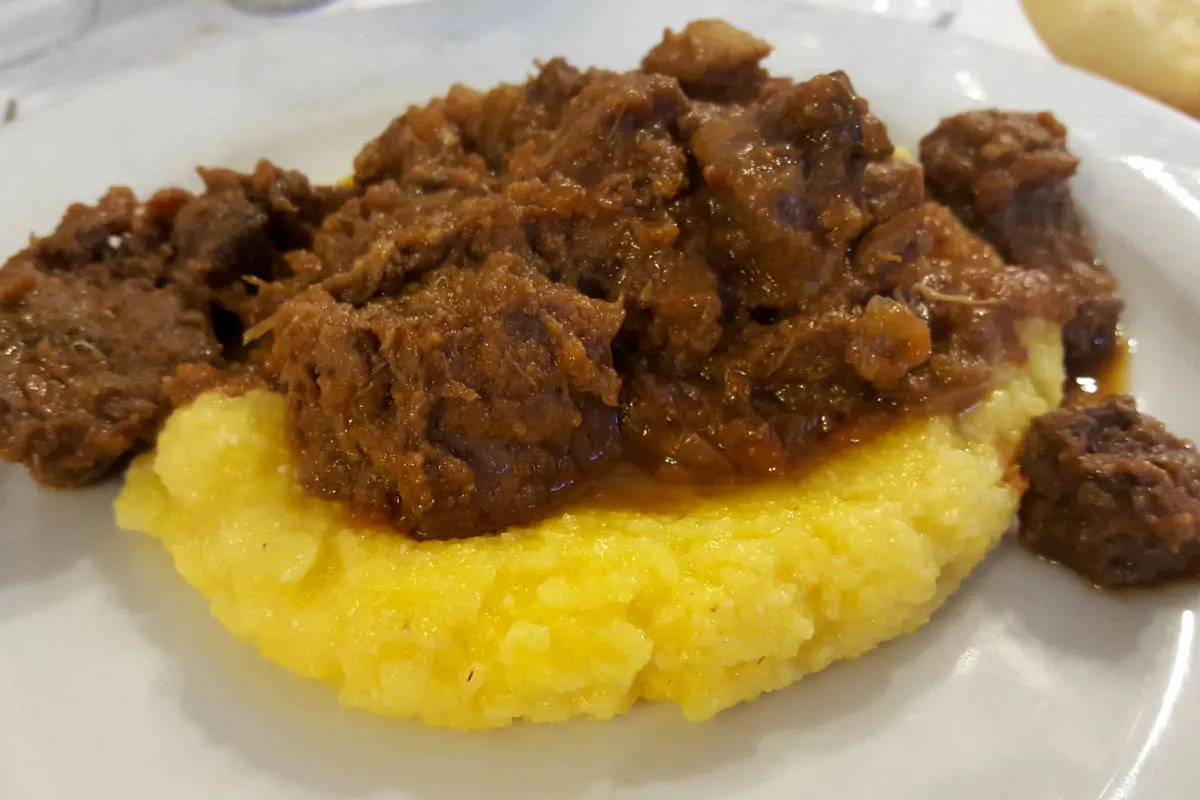
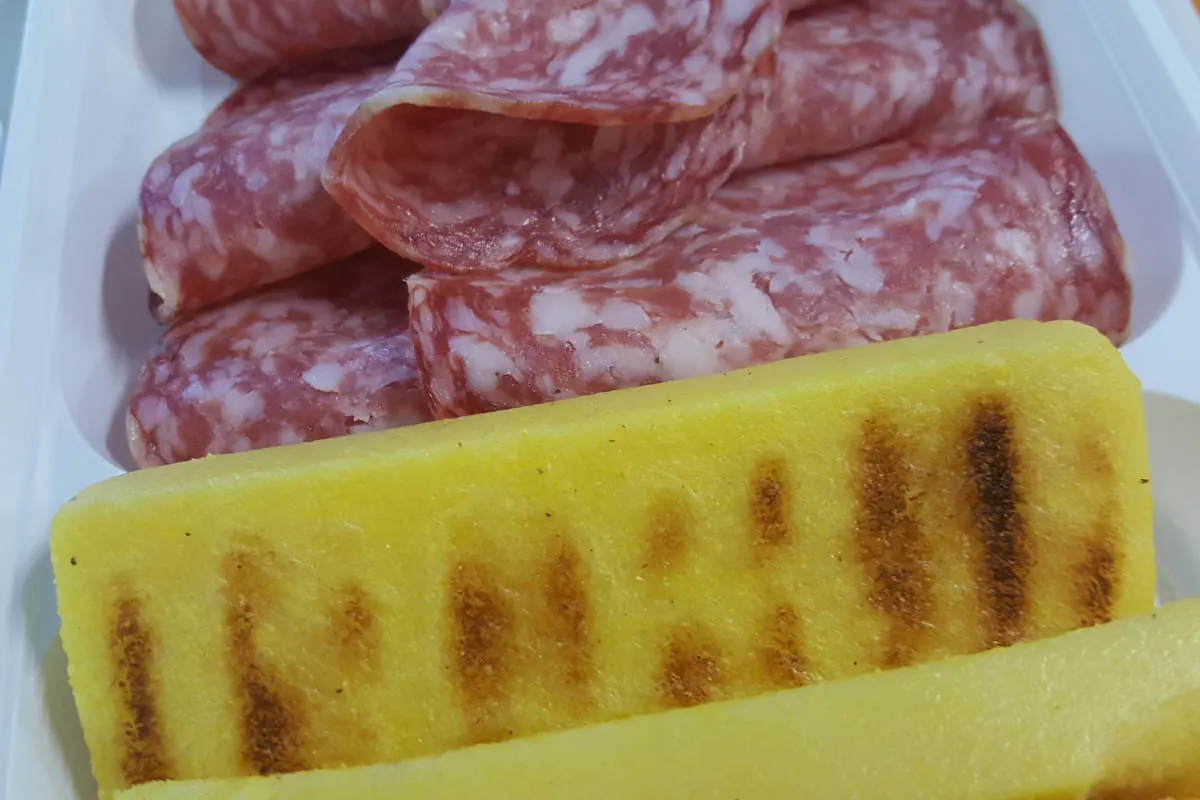
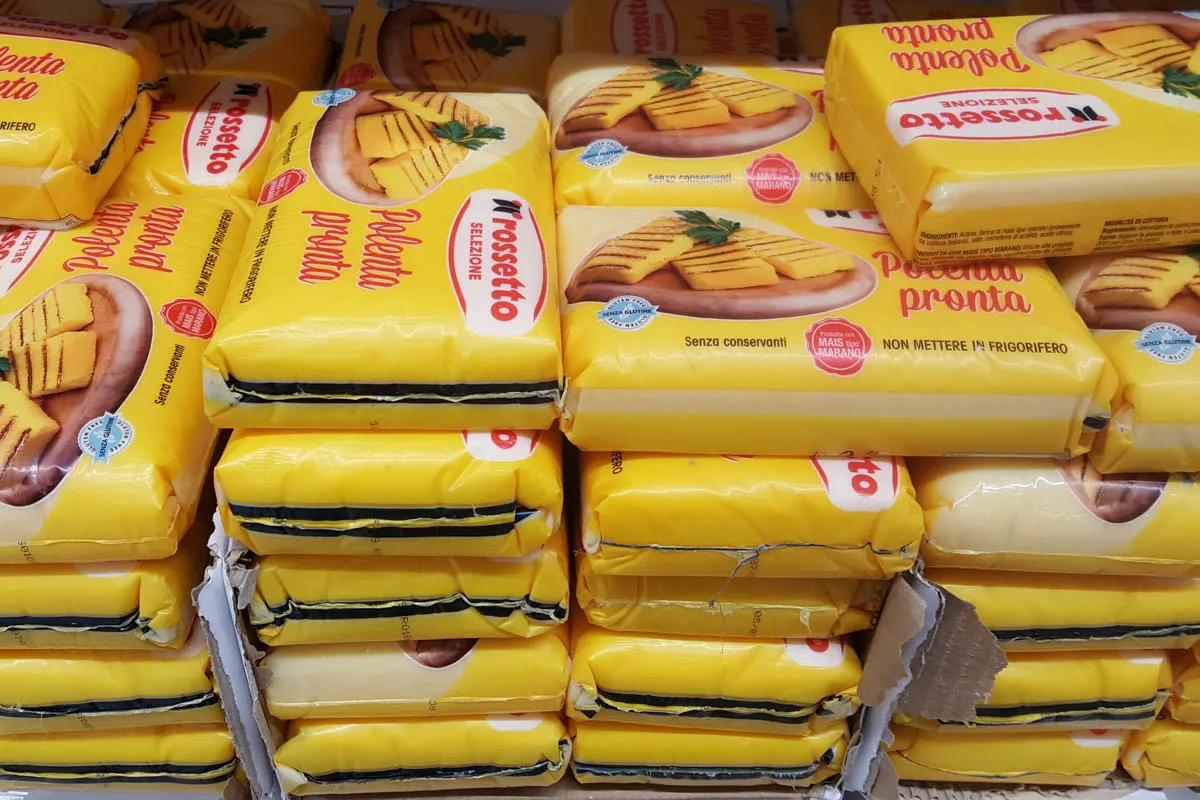
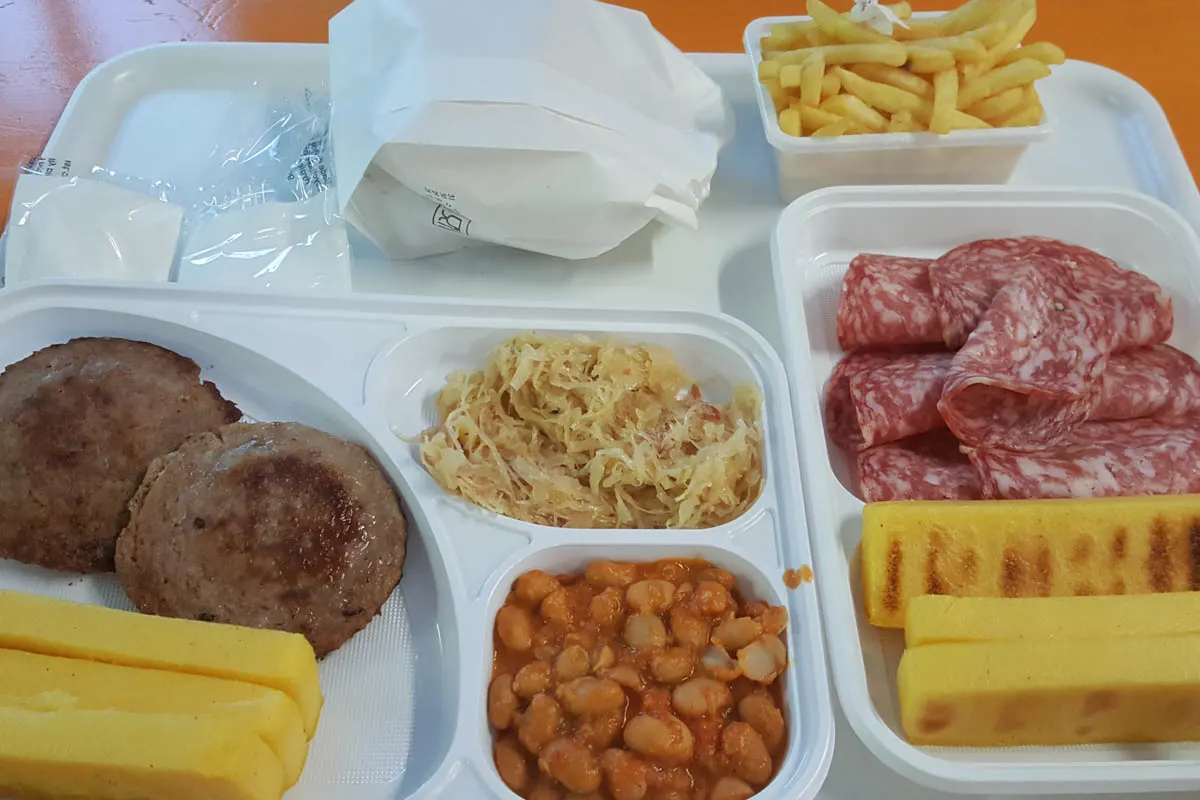
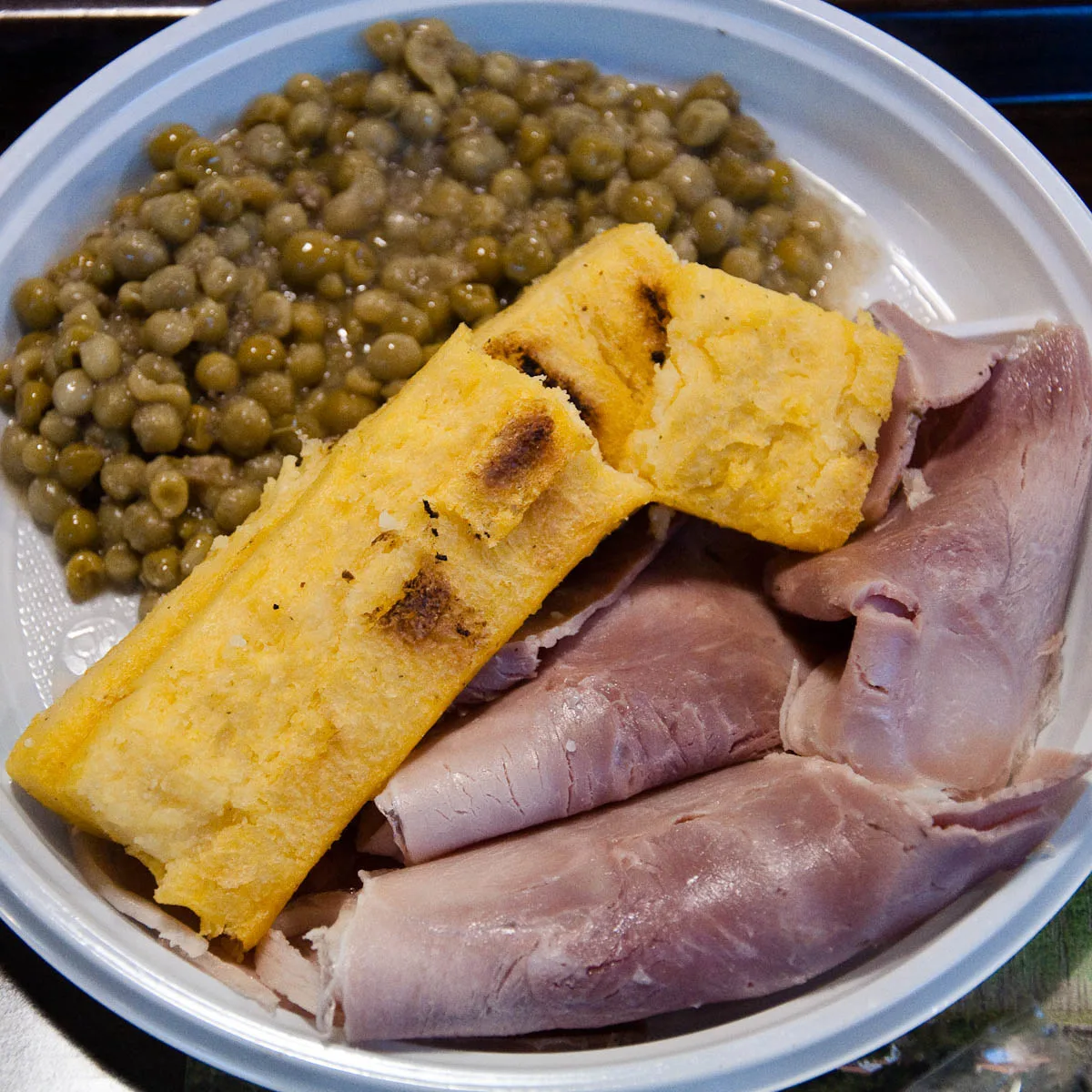
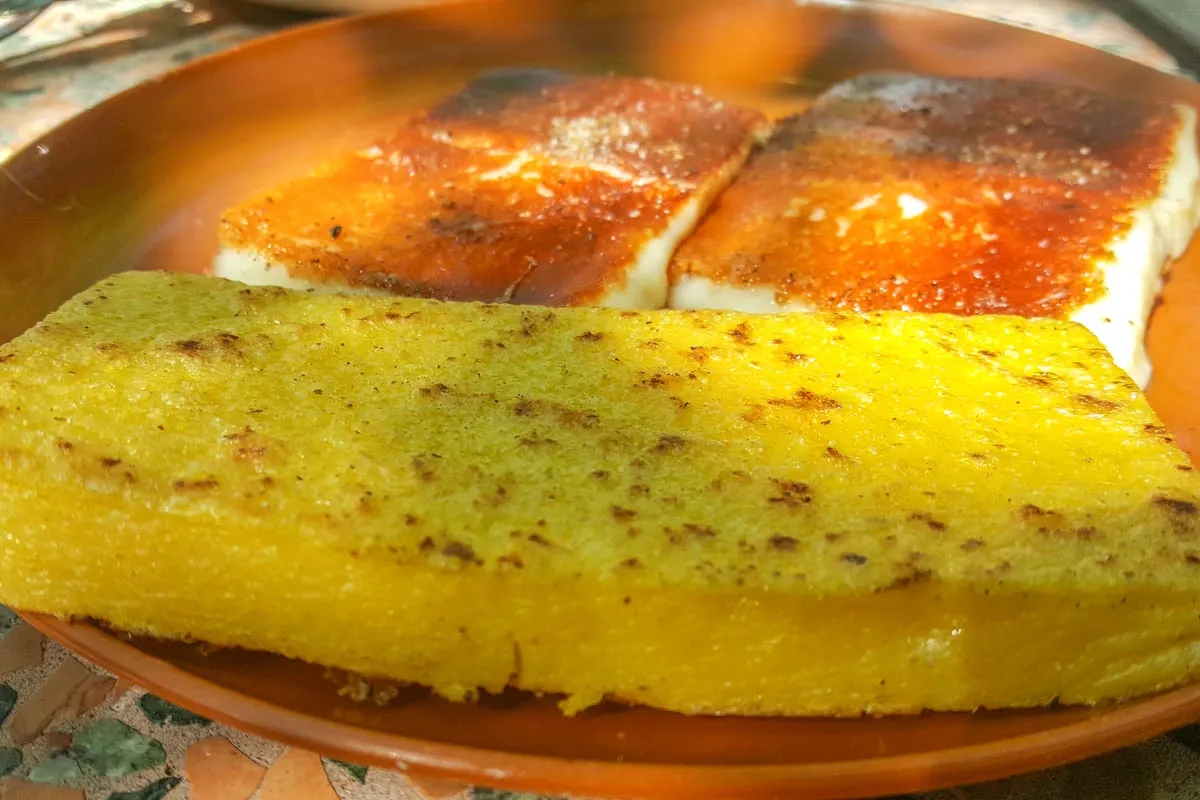
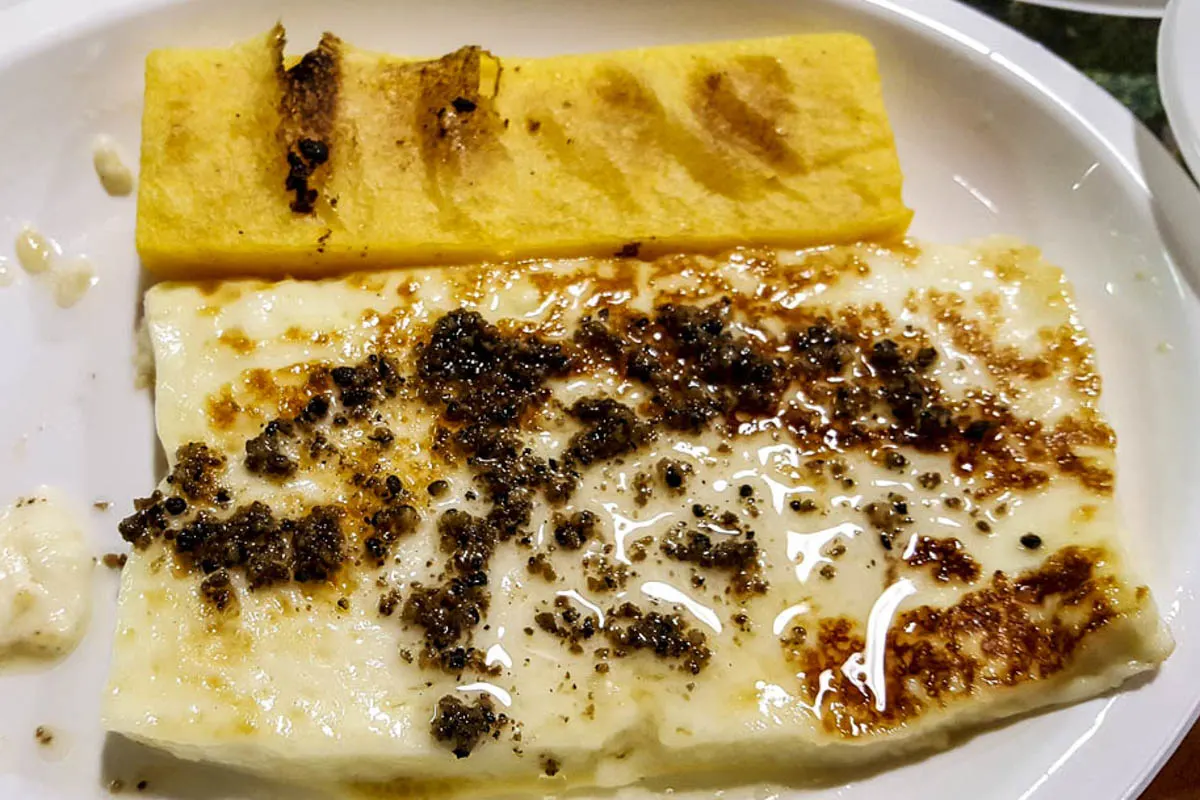
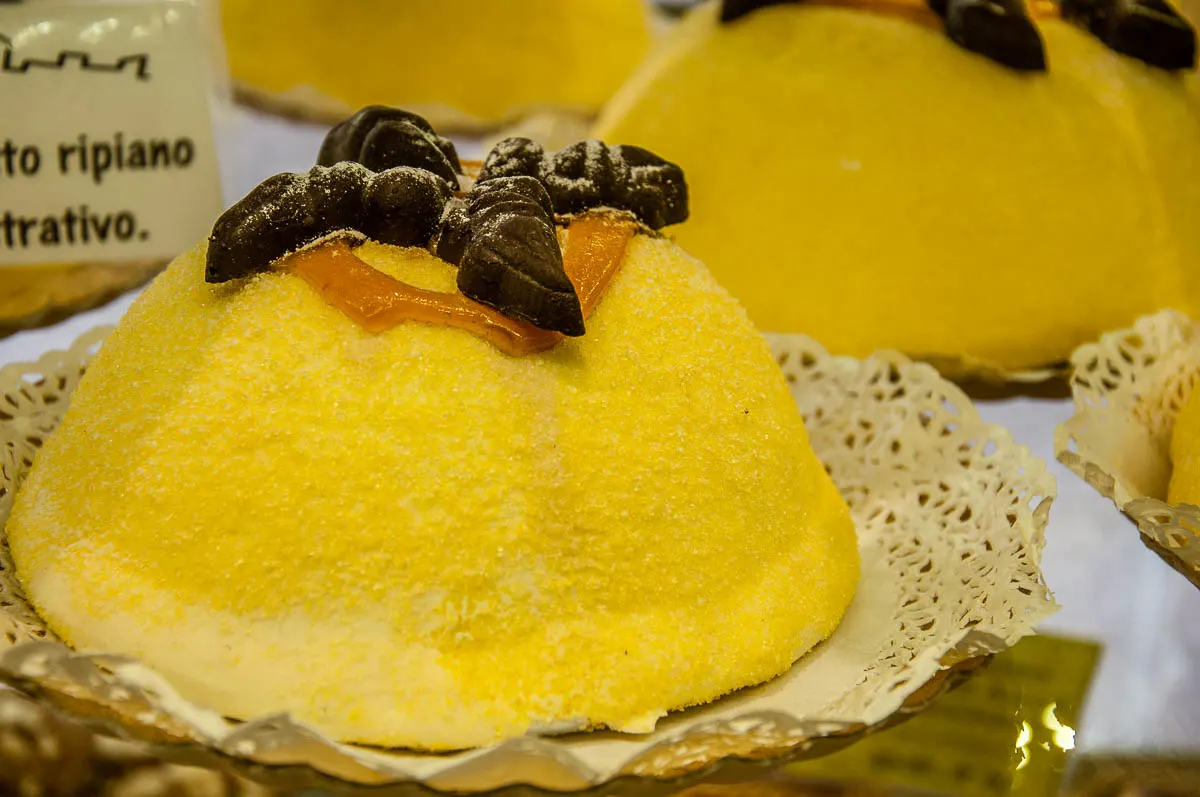
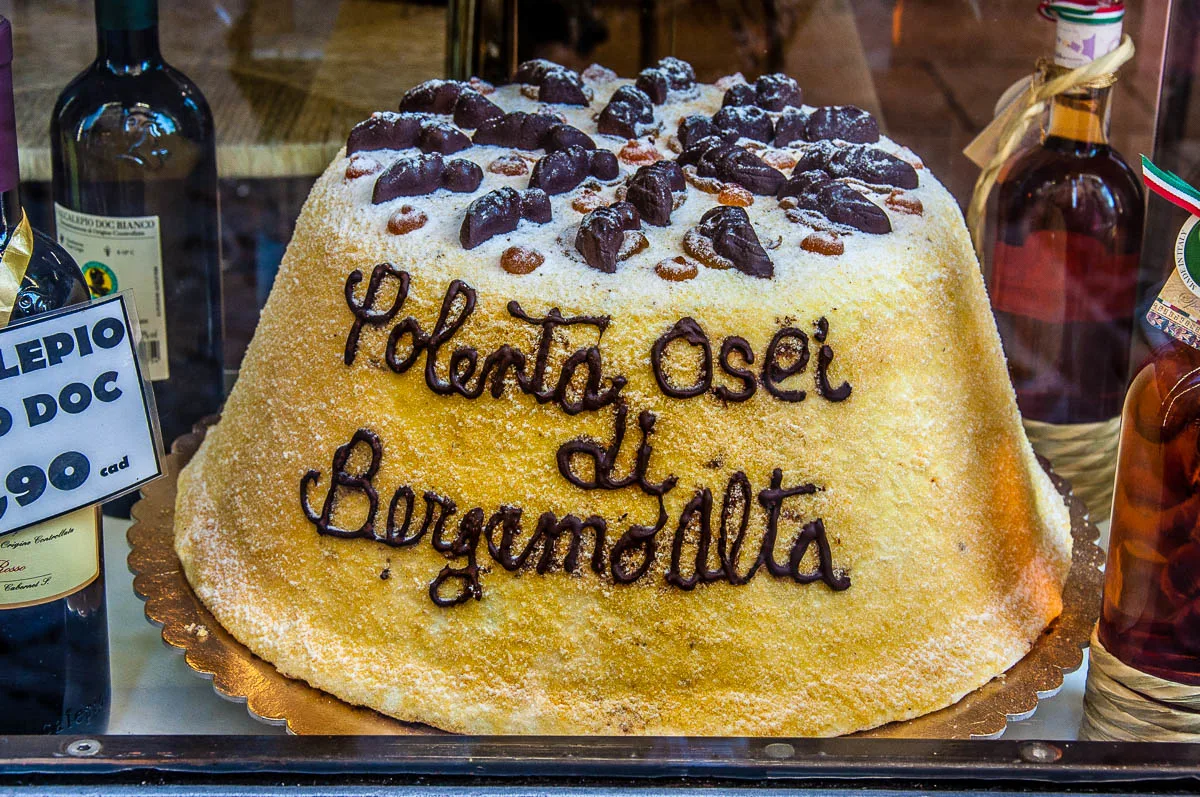
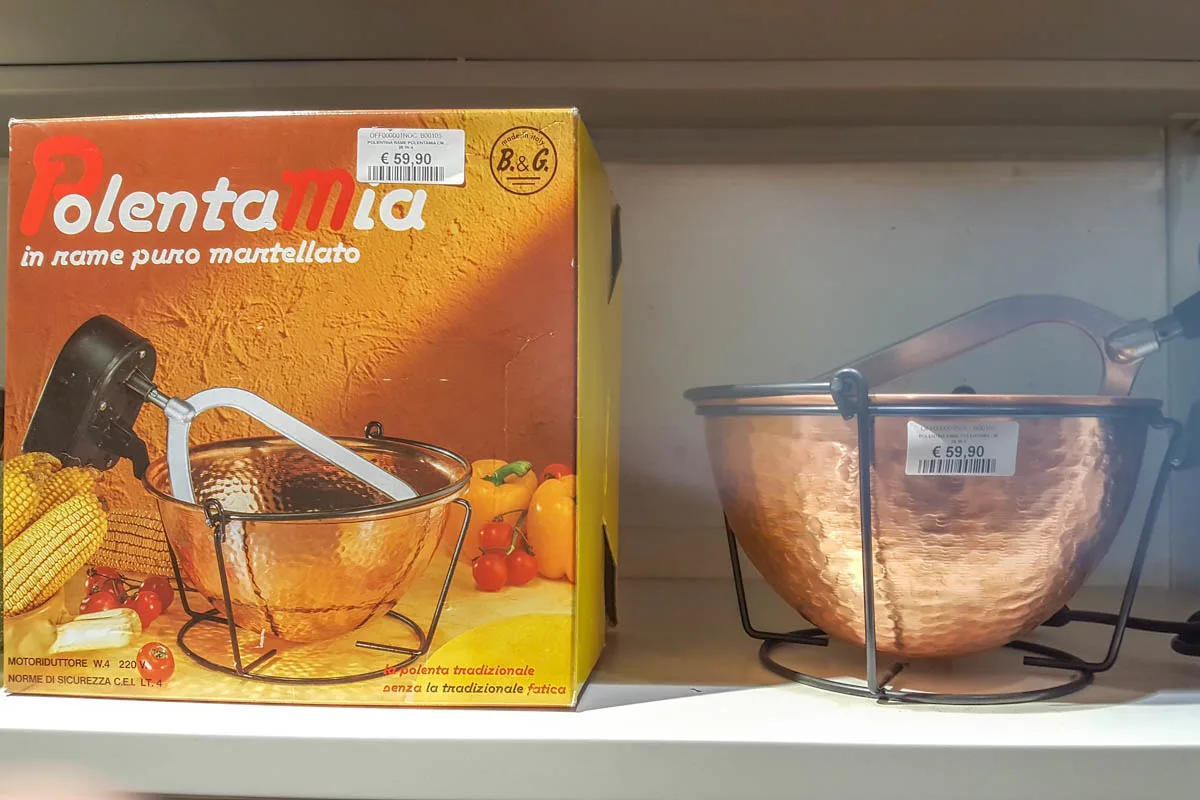
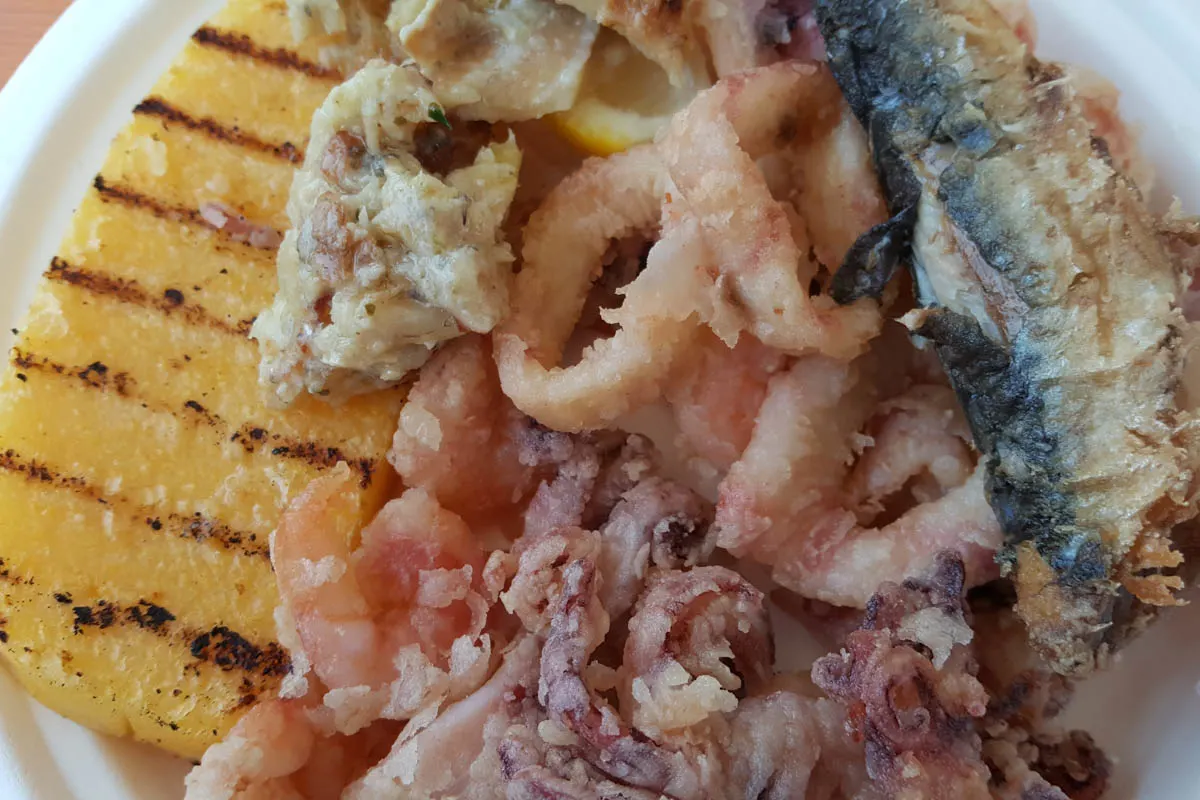

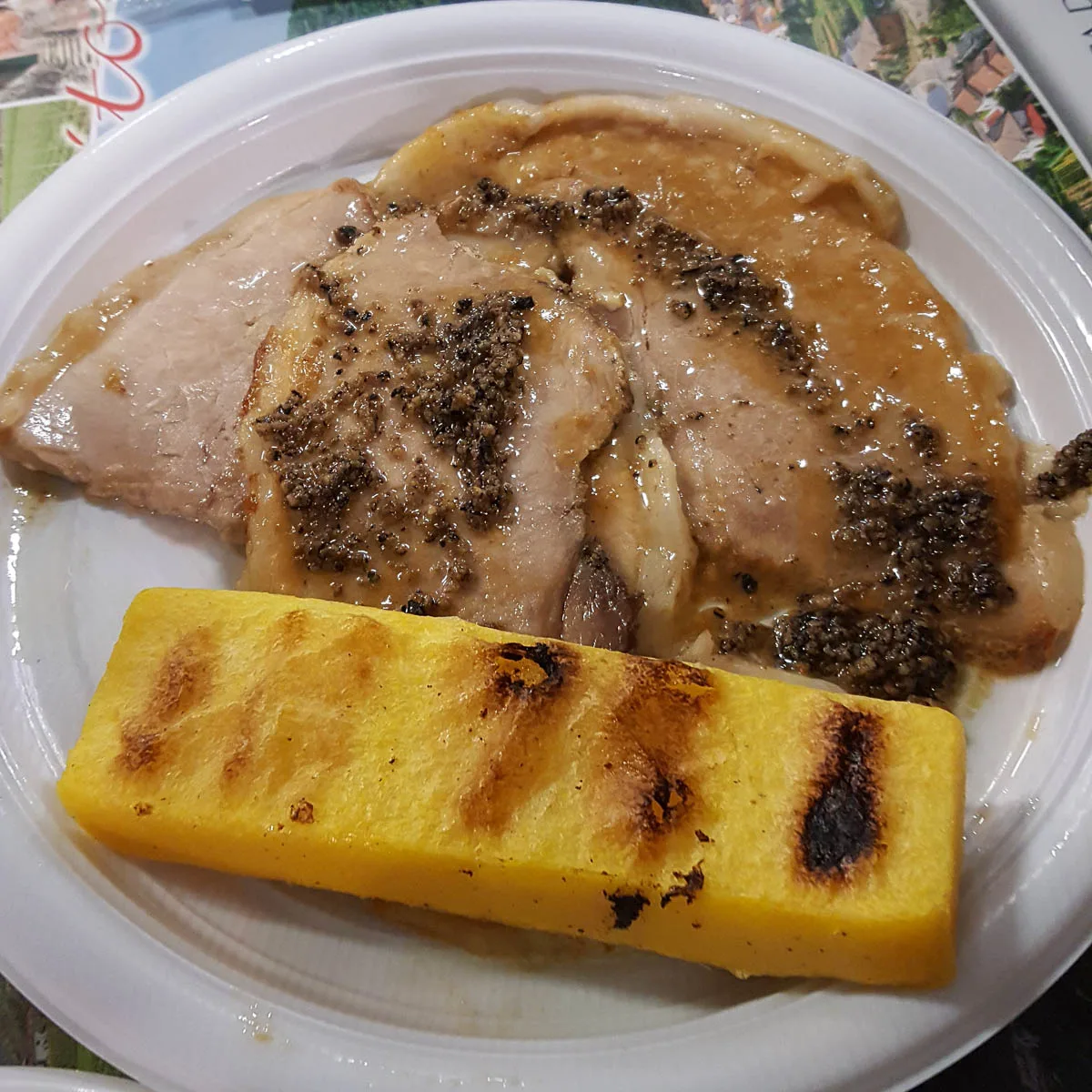

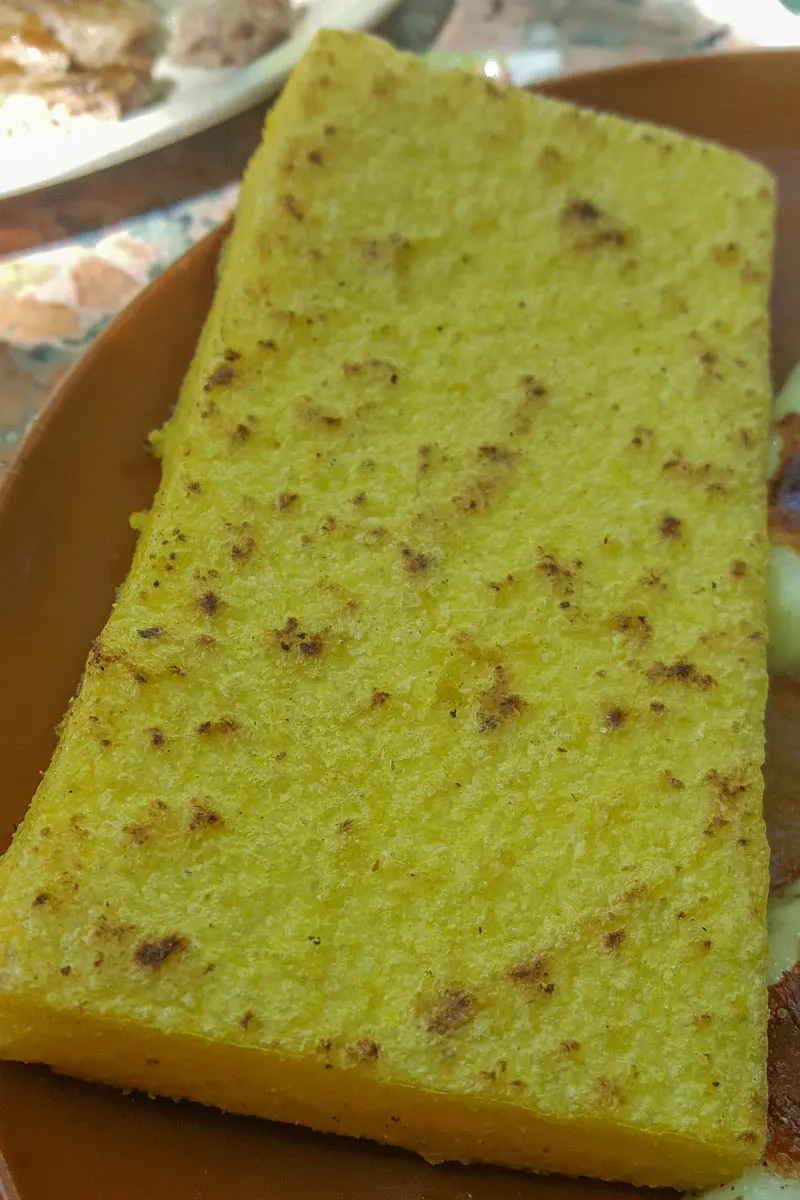
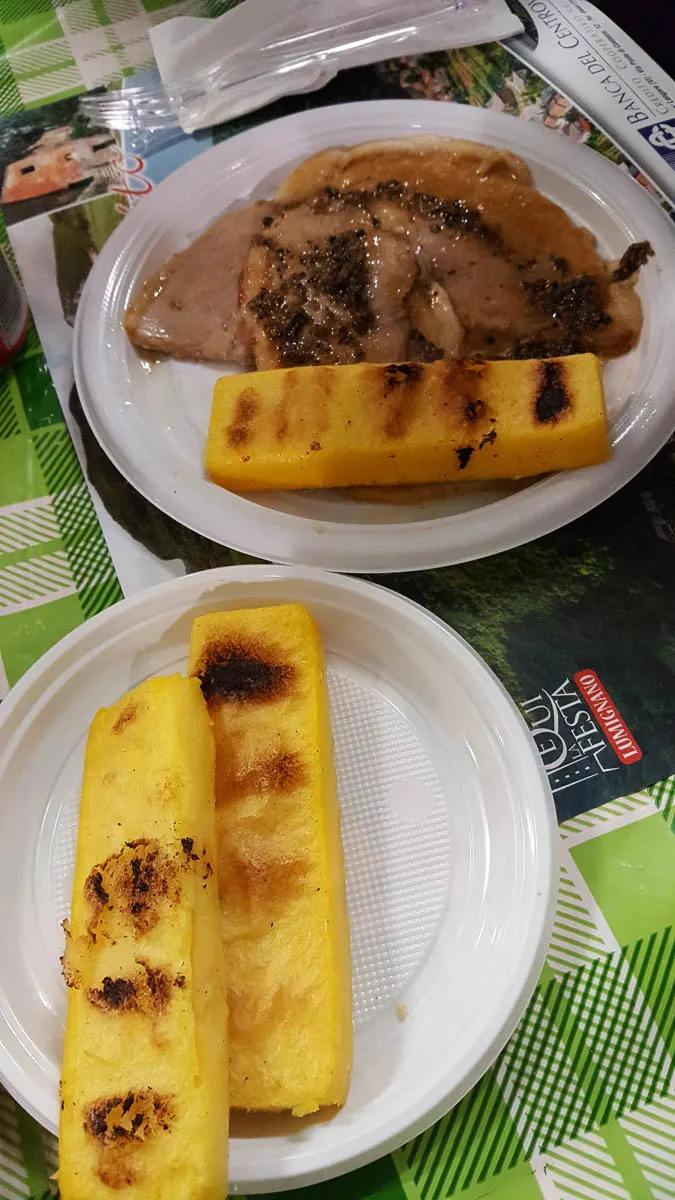
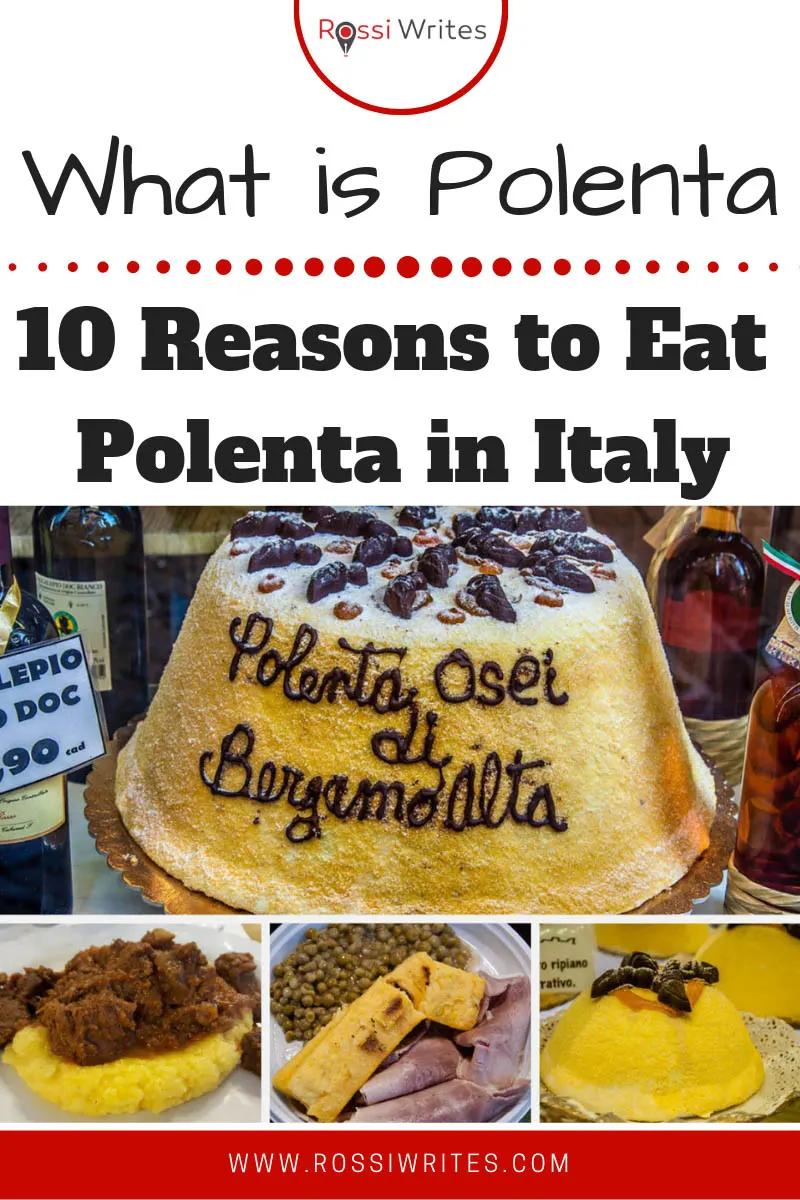
Brenda Jones
Thursday 2nd of November 2023
With tomatoes sauce and ham layerd like lazonia. It is delicious.
admin
Friday 3rd of November 2023
This actually sounds quite delicious! :)